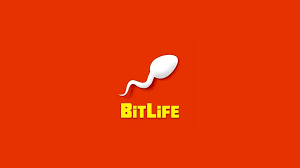The USDA Rural Energy for America Program (REAP) offers energy efficiency grants that empower rural businesses and agricultural producers to make impactful changes by improving their energy use. These grants are designed to help small businesses reduce energy consumption, lower utility costs, and adopt sustainable practices through the installation of energy-efficient technologies. The USDA energy efficiency grants support a wide range of projects, from updating old equipment to incorporating renewable energy systems such as solar panels, making rural businesses more competitive and environmentally conscious.
How USDA Energy Efficiency Grants Work
The USDA energy efficiency grants are part of a broader initiative to promote renewable energy and energy-saving technologies in rural America. These grants cover up to 25% of the total project cost, making it easier for small businesses to invest in necessary upgrades without bearing the full financial burden. Eligible projects include the replacement or upgrade of inefficient heating, cooling, and lighting systems, the installation of high-efficiency refrigeration units, and even the adoption of solar power.
In addition to the grants, the USDA offers loan guarantees, providing businesses with greater flexibility in funding their energy-saving projects. This combination of grants and loans ensures that more rural businesses can afford the improvements needed to reduce energy waste and boost their bottom line.
Eligibility for USDA Energy Efficiency Grants
To qualify for USDA energy efficiency grants, businesses must operate in rural areas and demonstrate that their projects will result in measurable energy savings. The REAP program is open to agricultural producers and small businesses that derive at least 50% of their income from farming or related activities. The grants are available for both new construction and retrofit projects, giving businesses the flexibility to address their specific needs.
Eligible projects include:
- Installing energy-efficient lighting, HVAC, or refrigeration systems
- Replacing inefficient boilers or heating systems
- Upgrading to energy-efficient windows and insulation
- Adding renewable energy sources like solar or wind power to reduce reliance on the grid
These projects not only reduce energy costs but also contribute to the sustainability and environmental health of rural communities.
Benefits of USDA Energy Efficiency Grants
- Cost Savings: One of the primary advantages of USDA energy efficiency grants is the reduction in operating costs. By investing in energy-efficient technologies, businesses can significantly lower their energy bills, resulting in long-term financial savings. These savings allow businesses to reinvest in their operations and growth.
- Environmental Impact: Energy-efficient systems help reduce greenhouse gas emissions and the overall environmental footprint of businesses. By adopting eco-friendly technologies, rural businesses can contribute to national and global sustainability goals while also benefiting from a greener business reputation.
- Business Growth and Competitiveness: Reducing energy costs increases profitability, enabling small rural businesses to compete more effectively in their markets. Energy-efficient businesses often have lower operating expenses, giving them a competitive edge and the potential to grow their operations.
- Access to Modern Technology: USDA grants make it possible for small businesses to adopt cutting-edge energy-saving technologies that they might not otherwise be able to afford. These technologies not only increase efficiency but also enhance the comfort and functionality of business facilities.
How to Apply for USDA Energy Efficiency Grants
Applying for USDA energy efficiency grants requires businesses to complete an application outlining the scope of their project, its energy-saving potential, and estimated costs. Applicants must provide energy audits and technical reports detailing how the proposed improvements will reduce energy consumption. The USDA offers guidance and resources to help applicants navigate the process and submit competitive proposals.
The application process can be highly competitive, so businesses must demonstrate a strong potential for energy savings and cost-effectiveness to maximize their chances of receiving funding.
Conclusion
USDA energy efficiency grants offer a valuable opportunity for rural small businesses and agricultural producers to reduce energy consumption, lower operational costs, and contribute to environmental sustainability. By investing in energy-efficient technologies, these grants enable businesses to not only improve their financial performance but also enhance the sustainability of rural communities across America. Whether upgrading heating systems, adopting renewable energy, or retrofitting lighting, the USDA’s energy efficiency grants are a crucial resource in the move toward a greener, more cost-effective future for rural America.































































